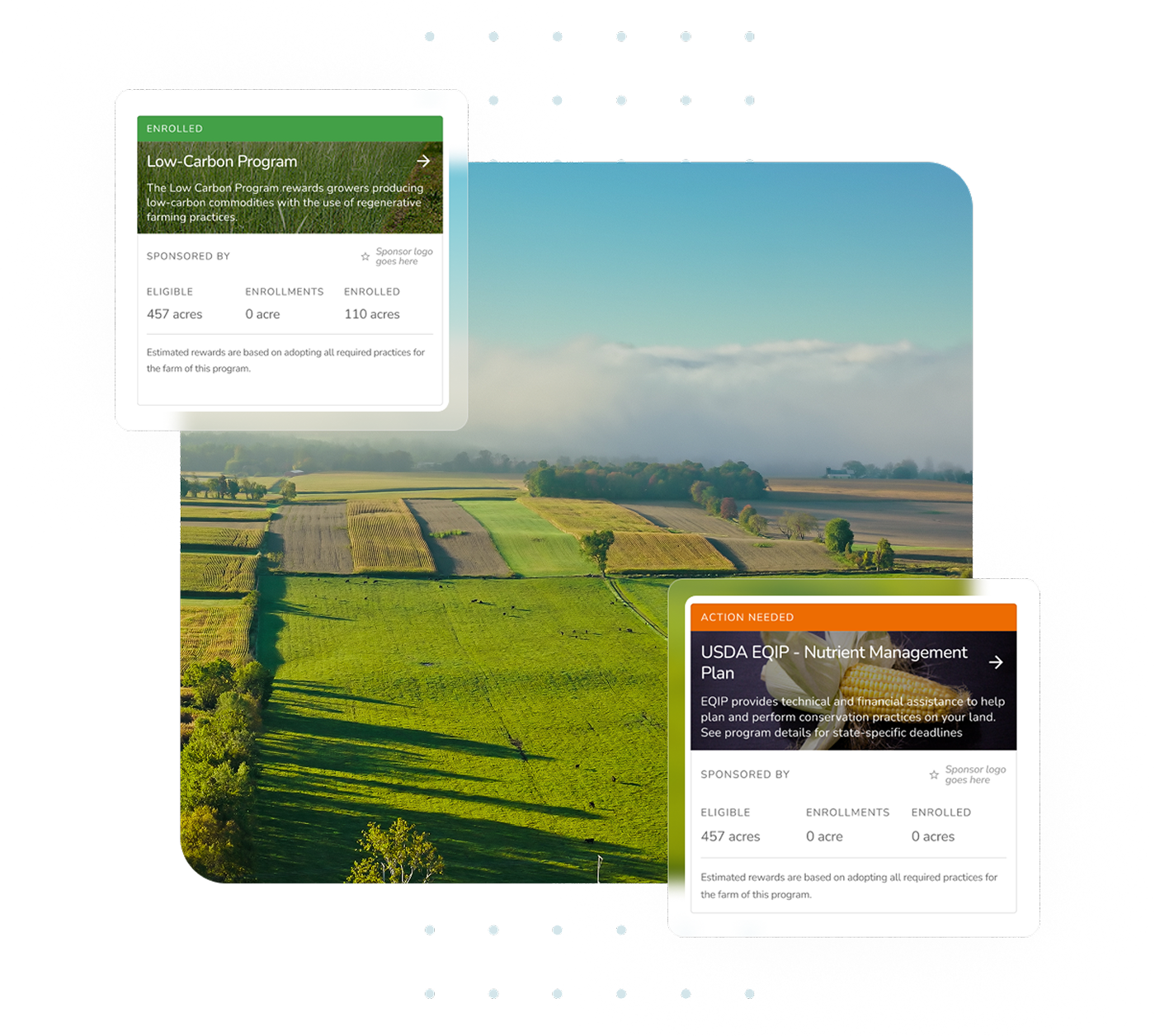Scalable. Flexible. Effective. All in one.
Streamline complex processes, reduce execution costs and meet reporting needs with the CIBO platform and software-enabled Trusted Advisor Network. CIBO merges modern, user-friendly technology and advanced analytics with on-the-ground, trusted experts, to scale sustainability initiatives and accelerate financial and environmental impact.

Cutting-edge solutions for every challenge.
& Expertise
.png)
Source acres, scale impact.
100M+
acres accessible through CIBO Trusted Advisors Network

200M+
acres modeled for carbon intensity and sequestration
Empowering farmers. Enhancing farmland resilience.
“Truterra is committed to putting farmers’ needs at the heart of all of our programs to ensure they have the knowledge, resources, and tools to scale regenerative practices benefitting both the environment and the farmer’s bottom line. By leveraging CIBO Impact, we are empowering farmers to implement practices that enhance farmland resilience and foster long-term sustainability.”
“Truterra is committed to putting farmers’ needs at the heart of all of our programs to ensure they have the knowledge, resources, and tools to scale regenerative practices benefitting both the environment and the farmer’s bottom line. By leveraging CIBO Impact, we are empowering farmers to implement practices that enhance farmland resilience and foster long-term sustainability.”
Jamie Leifker, President, Truterra
Jamie Leifker, President, Truterra
.png)
Robust capabilities to rapidly advance your initiatives.
-2.png)
Efficiently design and deploy unlimited programs and get rapid program matching, pre-qualification and enrollment. CIBO is the industry’s only platform enabling growers to see eligibility and apply for USDA and private programs simultaneously. Growers maximize their payments and program sponsors benefit from improved engagement and enrollment.
Streamline Program Management
Efficiently design and deploy unlimited programs and get rapid program matching, pre-qualification and enrollment. CIBO is the industry’s only platform enabling growers to see eligibility and apply for USDA and private programs simultaneously. Growers maximize their payments and program sponsors benefit from improved engagement and enrollment.
-2.png)
Gain access to over 100 million acres and agronomic experts. CIBO’s platform makes it simple for organizations to find, engage and pay growers. A streamlined user-experience makes it easy for growers to participate.
.png)
Gain access to over 100 million acres and agronomic experts. CIBO’s platform makes it simple for organizations to find, engage and pay growers. A streamlined user-experience makes it easy for growers to participate.
.png)
.png)
CIBO enables the blending of public and private funds, which catalyzes program adoption, helps farmers scale regenerative practices and maximizes the impact of every dollar deployed.
Combine Public & Private Funds
CIBO enables the blending of public and private funds, which catalyzes program adoption, helps farmers scale regenerative practices and maximizes the impact of every dollar deployed.
.png)
Our reporting engine delivers rigorous impact reporting aligned with the newest standards and protocols including SBTi, GHGP, Verra and CDP. As industry standards evolve, we ensure your reporting and programs align. Our platform models and quantifies year-over-year progress for annual reporting and report-ready data can integrate with external inventory database platforms.
.png)
Our reporting engine delivers rigorous impact reporting aligned with the newest standards and protocols including SBTi, GHGP, Verra and CDP. As industry standards evolve, we ensure your reporting and programs align. Our platform models and quantifies year-over-year progress for annual reporting and report-ready data can integrate with external inventory database platforms.
.png)
.png)
See it for yourself
Meet with us to explore how CIBO can address your organization’s unique challenges, goals and interests.
Meet with us to explore how CIBO can address your organization’s unique challenges, goals and interests.